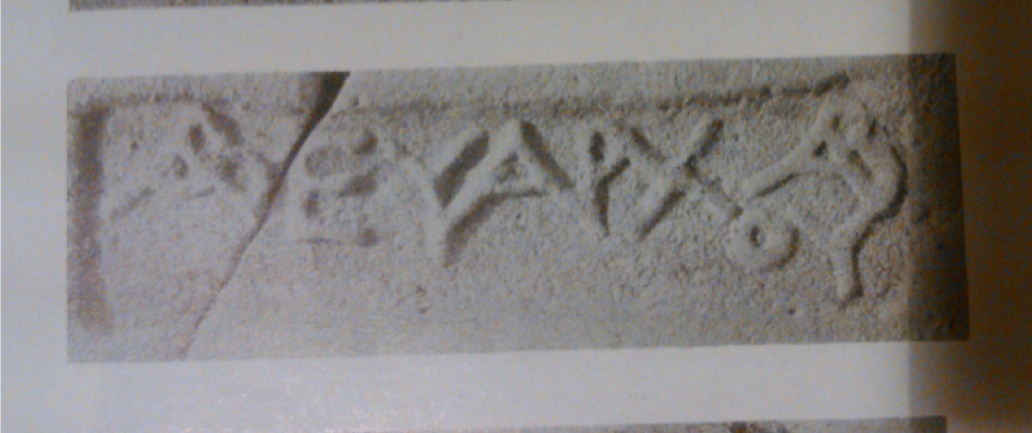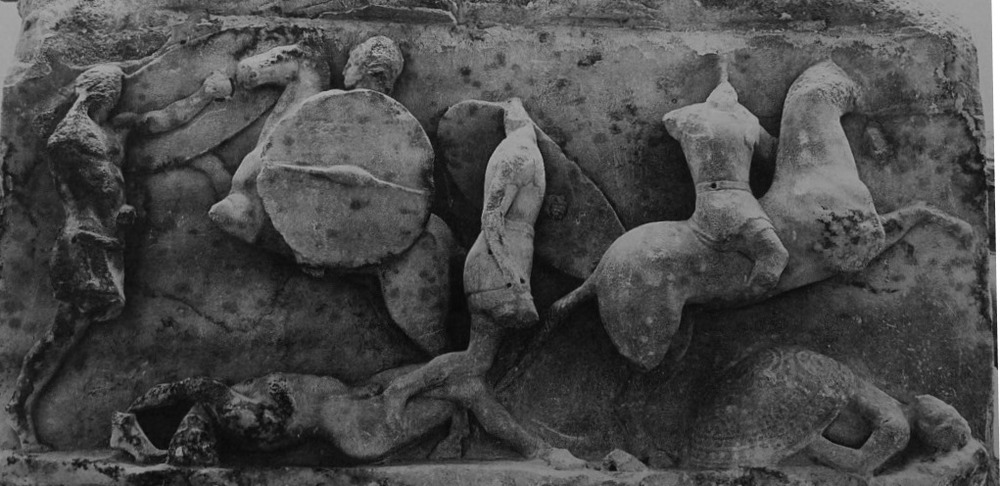I would not be so absolute Andrew.

Experts have many more ways and tools to classify blocks and architectural parts. That is why we call them experts. The reference above is clear on that. The Miller study also gives good examples: for the reconstruction of the shield/column monument, the use only three architectural parts, which they identify they belong to the same group because of commonalities in workmanship, among others.
Explaining the photo of the inscription is not an easy task. Proportions don't match unless we are dealing with a very strange distortion of the photo, preferentially distorting the blocks dimensions but not the letter forms (as said people have aligned letters to optimize the comparison and resulting differences are not marginal). The inscription in the photo covers most of the front surface of the block, some (including me) assume the block is reduced also in height and that actually matches the sketch by the excavators where they show that in the original block the inscription would have occupied much less area.
On the other hand, the fact that both top and bottom drafting appear on the block is problematic. I tried to offer an explanation for that, I recognize it is not the best one. Maybe the easiest solution to the problem is to assume that the block did not belong to the peribolos, but I can't believe such a mistake was done by more than one investigators. Mistakes are of course possible, so lets hope soon to get an explanation about how the classification was done and some better arguments about the reconstruction of the block.
Lets also not forget that there is still no proof whether the inscription was written before Kastas was built or after the blocks removal from the perivolos. If the second is valid, all above discussion is pointless.
Thanks again for the effort to obtain the block photos - at least now we know that the part where the Π could have been is missing. That is something new.




 (see also here:
(see also here: